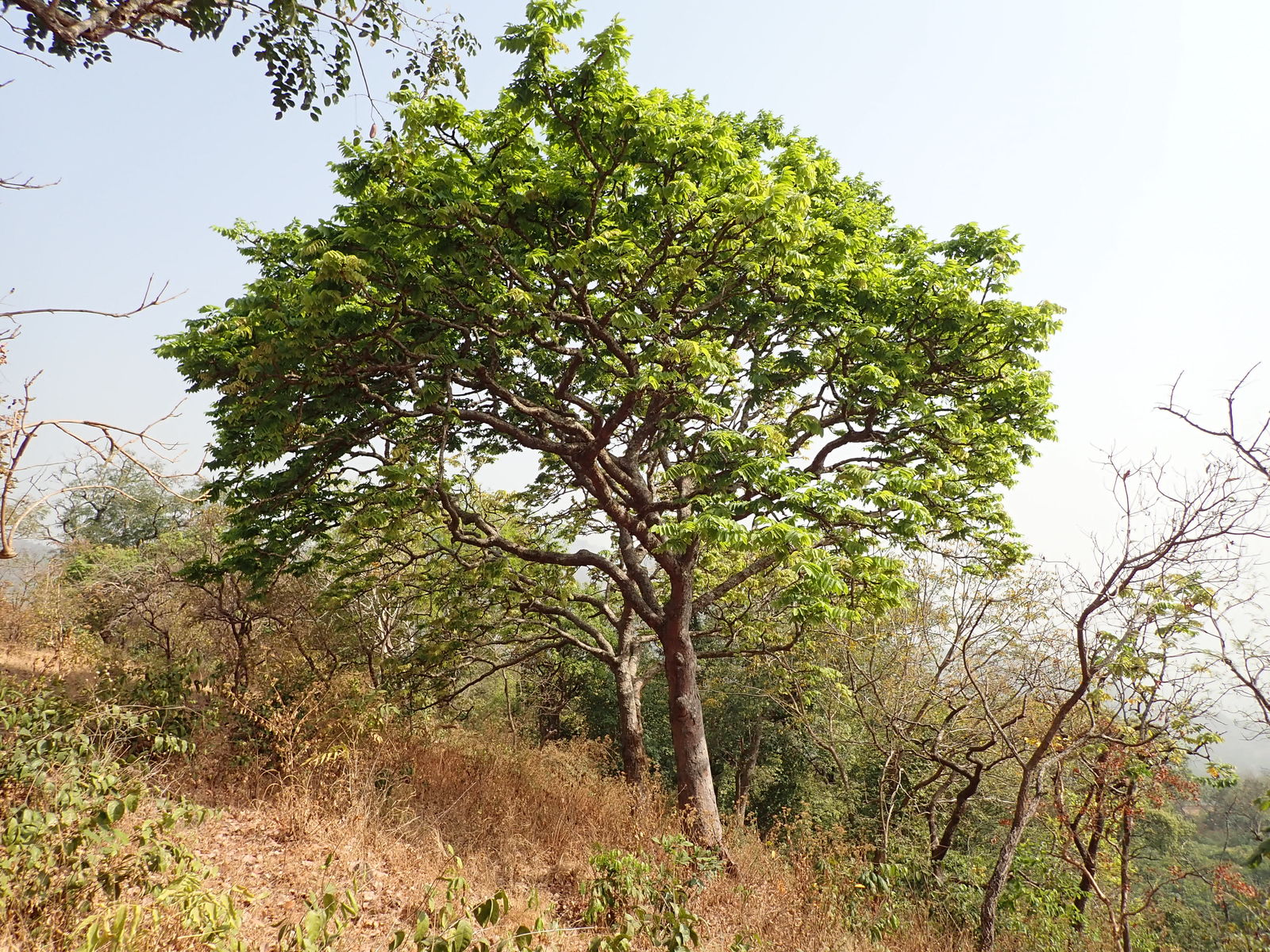Daniellia oliveri

|
|
Daniellia oliveri Common Names: African Copaiba, Balsam Tree,
Niger-Copal, Maaje, West African Gum Copal Scientific
Classification Kingdom: Plantae Clade: Tracheophytes Clade: Angiosperms Clade: Eudicots Clade: Rosids Order: Fabales Family: Fabaceae Subfamily: Caesalpinioideae Genus: Daniellia Species: D. oliveri Binomial Name: Daniellia oliveri (Rolfe) Hutch. & Dalziel Synonyms: Paradaniellia oliveri Rolfe, Daniellia thurifera Benn. Morphological Description Daniellia oliveri is a deciduous tree, growing 15–25 m tall, occasionally
reaching 45 m in optimal conditions. Key features include: · Trunk: 0.6–1.2 m diameter, with pale grey, scaly bark exuding
reddish gum when slashed · Leaves: Pinnate, 15–30 cm long, with 7–13 elliptic leaflets (4–10 cm
long, 2–5 cm wide), glossy green · Flowers: Small, white to greenish-yellow, 5–8 mm long, in loose
panicles, blooming in dry season · Fruit: Flat, woody pods, 5–8 cm long, 2–3 cm wide, brown,
containing 1–2 seeds The tree produces a
fragrant resin, African copal, from its bark. Distribution and Habitat Daniellia oliveri is native to West and Central Africa, spanning Senegal to
Sudan, south to northern Angola. It thrives in: · Regions: Wooded savannas, dry forests, forest-savanna transitions · Climate: Tropical, 25–35°C, rainfall 800–1,800 mm annually · Soil: Well-drained, sandy to loamy, pH 5.0–7.0 · Elevation: 200–1,500 m Countries include
Nigeria, Ghana, Cameroon, Senegal, Mali, Burkina Faso, Togo, Benin, Ivory
Coast, Guinea, Chad, and Central African Republic. Ethnopharmacology Daniellia oliveri is a staple in West African traditional medicine, with
studies validating its uses: · Gastrointestinal Issues: Leaf decoctions in Nigeria treat diarrhea;
stem bark extracts reduce spasms in rats (IC₅₀ 0.25 mg/mL) (Ahmadu et al.,
2007). · Antimicrobial: Daniellia oliveri was specifically reported to
treat intertrigo and candidiasis with MICs ranging from 16 to 256 µg/mL (Tittikpina,
N. K, et al., 2022). · Malaria: Bark in Ghana lowers fever; study justifies the
ethno-medicinal use of D. oliveri in the management of malaria. (Mba et al.,
2023). · Wounds/Ulcers: Resin in Mali heals sores · Respiratory Conditions: Leaf infusions in Senegal ease coughs;
bark extracts relax bronchial muscles in rats (Ahmadu, A., et al., 2004). · Anti-inflammatory: Bark in Burkina Faso reduces swelling; The
extract showed significant anti-inflammatory effect (73.68 and 75.79%,
inhibition) in xylene-induced ear oedema test at the dose of 100 and 200 mg/kg,
respectively also significant increase in the activities of CAT and SOD and GSH
concentration. The histopathological assessment of the pouch lining revealed
reduction of immuno-inflammatory cell influx. Nociception was significantly
inhibited by the extract in acetic acid-induced writhing model and the second
phase of formalin test indicating a peripheral mechanism of action (Sofidiya,
Margaret O et al., 2021). · Antioxidant: Leaves in are used to combat oxidative stress; D. oliveri
leaf had the highest lipid peroxidation inhibitory activity (IC50 = 3.71 µg/mL)
compared with tocopherol and quercetin (IC50 = 4.84 and 26.58 µg/mL). The
iron-chelating activity of the extracts was low compared to EDTA. Additionally,
total polyphenolic content estimation revealed a considerable amount of
phenolics, flavonoids and proanthocyanidins which may be responsible for the
antioxidant activity exhibited by the extracts. These results provide the
scientific evidence suggesting the potential antioxidant property of D. oliveri
(Olaleye et al., 2020). Phytochemistry Medicinal properties
stem from bioactive compounds: · Polyphenols/Flavonoids: Antioxidant, anti-inflammatory (Olaleye et
al., 2020) · Saponins: Antimicrobial, antidiarrheal (Ahmadu et al., 2007) · Alkaloids: Analgesic, antipyretic (Mba et al., 2023) ⚠ Toxicity Profile: No acute toxicity at traditional doses. he acute toxicity study did not cause mortality
or signs of toxicity at 2000 mg/kg, p.o(Sofidiya, Margaret O et al., 2021). Additional Uses · Economic: African copal gum used in varnishes, incense, and adhesives · Timber: Hardwood for construction, furniture, and fuelwood · Environmental: Agroforestry shade tree, soil erosion control · Cultural: Resin in rituals; leaves as fodder in dry seasons References
External Links More Pictures |
|
| Compounds of Daniellia oliveri | |
| References |